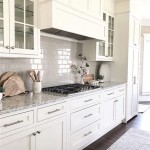Essential Aspects of Kitchen Cabinet Filler Strips
Kitchen cabinet filler strips play a crucial role in ensuring that your cabinets fit seamlessly and function optimally. These narrow strips of material fill the gaps between cabinets, walls, and appliances, creating a finished and professional-looking appearance while providing structural support.
Types of Filler Strips
There are several types of filler strips available, each with its own advantages and applications:
- Wood Filler Strips: Made from solid wood, these strips offer durability and a natural finish. They can be painted or stained to match the cabinet color.
- Laminate Filler Strips: These strips are made from a thin layer of laminate bonded to a particleboard or MDF core. They are available in a wide range of colors and finishes to complement any kitchen style.
- Vinyl Filler Strips: Vinyl strips are flexible and easy to install. They are waterproof and resistant to fading, making them suitable for areas prone to moisture or sunlight.
Functions of Filler Strips
Kitchen cabinet filler strips serve multiple functions, including:
- Gap Fillers: They fill the gaps between cabinets, walls, and appliances, eliminating unsightly spaces and creating a seamless appearance.
- Structural Support: Filler strips provide additional support to cabinets, preventing them from sagging or shifting over time.
- Leveling Aid: They can be used to level uneven walls or floors, ensuring that cabinets are installed correctly.
- Protection: Filler strips protect the edges of cabinets from bumps and scratches.
- Aesthetics: They enhance the overall appearance of the kitchen by creating a finished and professional look.
Installation Tips
Proper installation is essential to ensure the effectiveness of kitchen cabinet filler strips. Here are some tips:
- Measure the gap accurately before choosing the filler strip size.
- Use a sharp knife or saw to cut the strip to the correct length.
- Apply a bead of adhesive to the back of the filler strip and press it firmly into place.
- Secure the strip with finish nails or screws for added stability.
- Allow the adhesive to dry completely before using the cabinets.
Conclusion
Kitchen cabinet filler strips are an essential element for a well-designed and functional kitchen. They fill gaps, provide structural support, protect cabinets, and enhance the overall appearance. By choosing the right type of filler strips and following the proper installation techniques, you can ensure that your cabinets fit seamlessly and last for years to come.

How To Install Cabinet Filler Strips

How To Install Cabinet Filler Strips

Step By Guide To Cutting And Installing Cabinet Fillers

How To Install Cabinet Filler Strips

6 Filler Tray Base Cabinet Momplex Vanilla Kitchen Ana White

Custom Kitchen Cabinets For Bathroom Home Office Or Built Ins Filler Strips

Kitchen Cabinet Fillers 3 Facts You Must Know Homelane Blog

Kitchen Cabinet Filler Strips

How To Use Filler Panels With Your Cabinets House Home

Kitchen Cabinet Filler Strips
Related Posts








